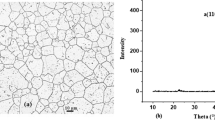It is shown that the corrosion of electrodes made of the valve metal (titanium) changes the structure of its effective resistance by increasing the contribution of Ohmic resistance of passive films on the metal–solution interface. It is shown that the passive films formed on titanium are monotonically aging, become more compact, and increase their Ohmic resistance under the condition of low aggressiveness of the electrolyte. This is indicated by the temperature coefficient, which is lower than 1%/°С. The processes of moderate and intense corrosion of titanium in acid and alkaline electrolytes are accompanied by periodic (with a period of more than a week) alternating processes of compactification and loosening of passive layers. Parallel with the general trend of increase in the effective resistance, we observed periodic changes both in its value and in the temperature coefficient. This leads to significant changes in the measurement errors of high-resolution sensors (with a period of oscillations of about one or two weeks). As temperature increases, the period of oscillations of measurement errors decreases. This promotes the intensification of damping of these oscillations (caused by the alternation of the limiting stages of current-forming processes) against the background of increase in the effective resistance of passive films on titanium.




Similar content being viewed by others
References
O. I. Buket, O. V. Linyucheva, A. V. Bludenko, O. V. Nagornyi, and O. M. Vashchenko, “Influence of corrosion processes on the engineering characteristics of electrochemical sensors,” Fiz.-Khim. Mekh. Mater., 1, Special Issue No. 9, 21–26 (2012).
V. P. Chviruk, O. V. Linyucheva, V. O. Nedashkovskii, and A. I. Buket, “Mass transfer in amperometric gas sensors,” Élektrokhim., No. 1, 80–90 (2006).
A. I. Buket, O. V. Linyucheva, A. V. Bludenko, and A. V. Nagornyi, “Influence of the nonstationary mass exchange in water on the current-forming surface of the gas-diffusive electrode of an amperometric sensor,” Vopr. Khim. Khim. Tekhnol., No. 4, 130–136 (2013).
O. I. Buket, O. V. Linyucheva, A. V. Bludenko, O. V. Nagornyi, and O. G. Linyuchev, “Influence of electroosmotic phenomena on the duration of transient processes in amperometric gas sensors,” Nauk. Visti NTUU “KPI”, No. 6, 83–88 (2013).
R. F. Voitovich and É. I. Golovko, High-Temperature Oxidation of Titanium and Its Alloys [in Russian], Naukova Dumka, Kiev (1984).
A. M. Sukhotin and L. I. Tungusova, “Passivity of titanium and the electrochemical properties of Ti2O3 ,” Zashch. Met., 7, No. 6, 655–659 (1971).
Author information
Authors and Affiliations
Corresponding author
Additional information
Translated from Fizyko-Khimichna Mekhanika Materialiv, Vol. 50, No. 5, pp. 81–86, September–October, 2014.
Rights and permissions
About this article
Cite this article
Buket, O.I., Linyucheva, O.V., Bludenko, A.V. et al. Influence of Corrosion on the Effective Resistance of Amperometric Sensor. Mater Sci 50, 714–720 (2015). https://doi.org/10.1007/s11003-015-9776-1
Received:
Published:
Issue Date:
DOI: https://doi.org/10.1007/s11003-015-9776-1




